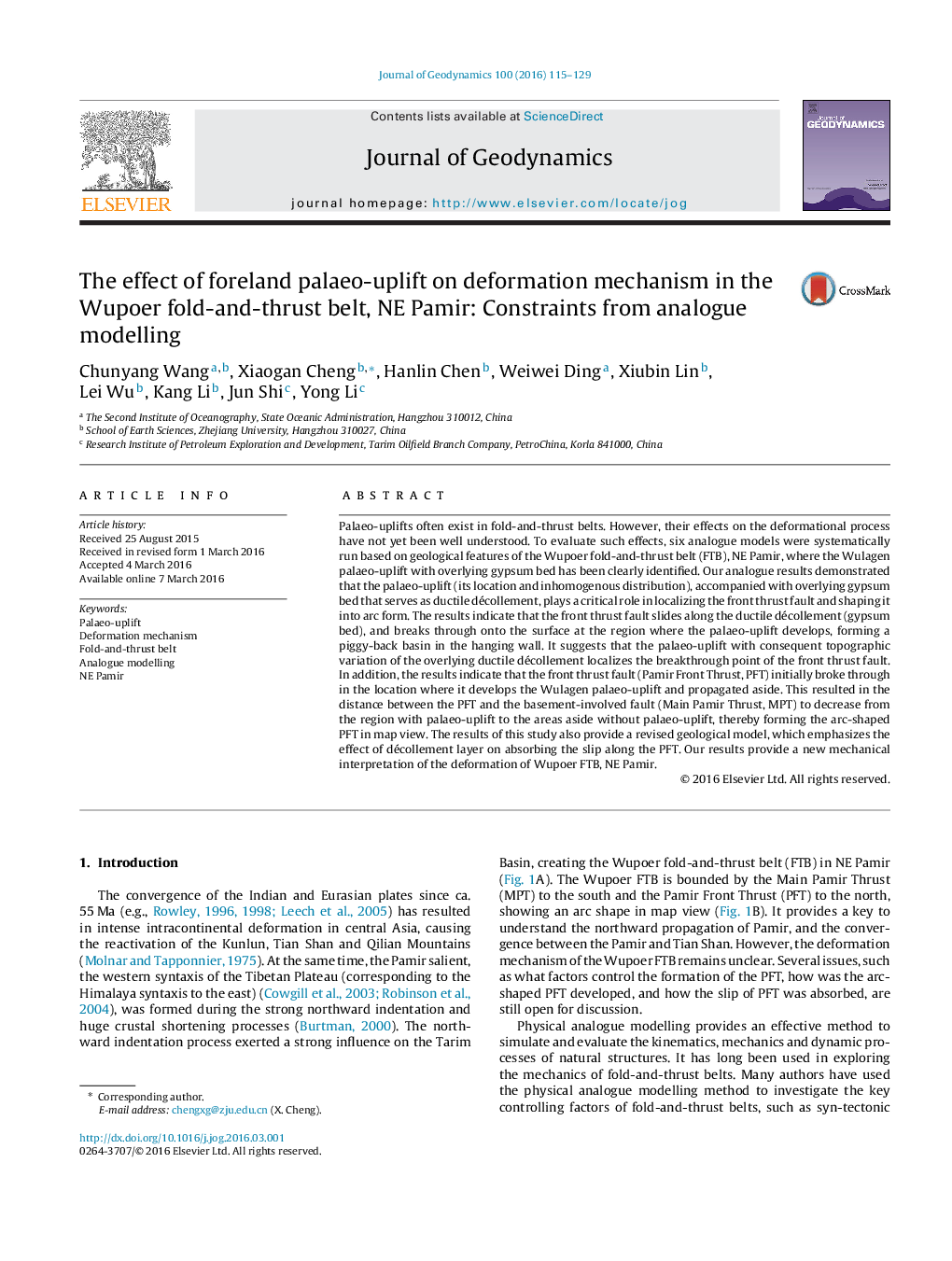| کد مقاله | کد نشریه | سال انتشار | مقاله انگلیسی | نسخه تمام متن |
|---|---|---|---|---|
| 6433071 | 1635750 | 2016 | 15 صفحه PDF | دانلود رایگان |

- Analogue models are run to evaluate the effects of palaeo-uplift on deformation.
- Palaeo-uplift together with overlying ductile layer localizes front thrust fault.
- Arc-shaped thrust belt can be caused by foreland inhomogeneous palaeo-uplift.
- We provide a new mechanical interpretation on the deformation of Wupoer FTB.
Palaeo-uplifts often exist in fold-and-thrust belts. However, their effects on the deformational process have not yet been well understood. To evaluate such effects, six analogue models were systematically run based on geological features of the Wupoer fold-and-thrust belt (FTB), NE Pamir, where the Wulagen palaeo-uplift with overlying gypsum bed has been clearly identified. Our analogue results demonstrated that the palaeo-uplift (its location and inhomogenous distribution), accompanied with overlying gypsum bed that serves as ductile décollement, plays a critical role in localizing the front thrust fault and shaping it into arc form. The results indicate that the front thrust fault slides along the ductile décollement (gypsum bed), and breaks through onto the surface at the region where the palaeo-uplift develops, forming a piggy-back basin in the hanging wall. It suggests that the palaeo-uplift with consequent topographic variation of the overlying ductile décollement localizes the breakthrough point of the front thrust fault. In addition, the results indicate that the front thrust fault (Pamir Front Thrust, PFT) initially broke through in the location where it develops the Wulagen palaeo-uplift and propagated aside. This resulted in the distance between the PFT and the basement-involved fault (Main Pamir Thrust, MPT) to decrease from the region with palaeo-uplift to the areas aside without palaeo-uplift, thereby forming the arc-shaped PFT in map view. The results of this study also provide a revised geological model, which emphasizes the effect of décollement layer on absorbing the slip along the PFT. Our results provide a new mechanical interpretation of the deformation of Wupoer FTB, NE Pamir.
Journal: Journal of Geodynamics - Volume 100, October 2016, Pages 115-129